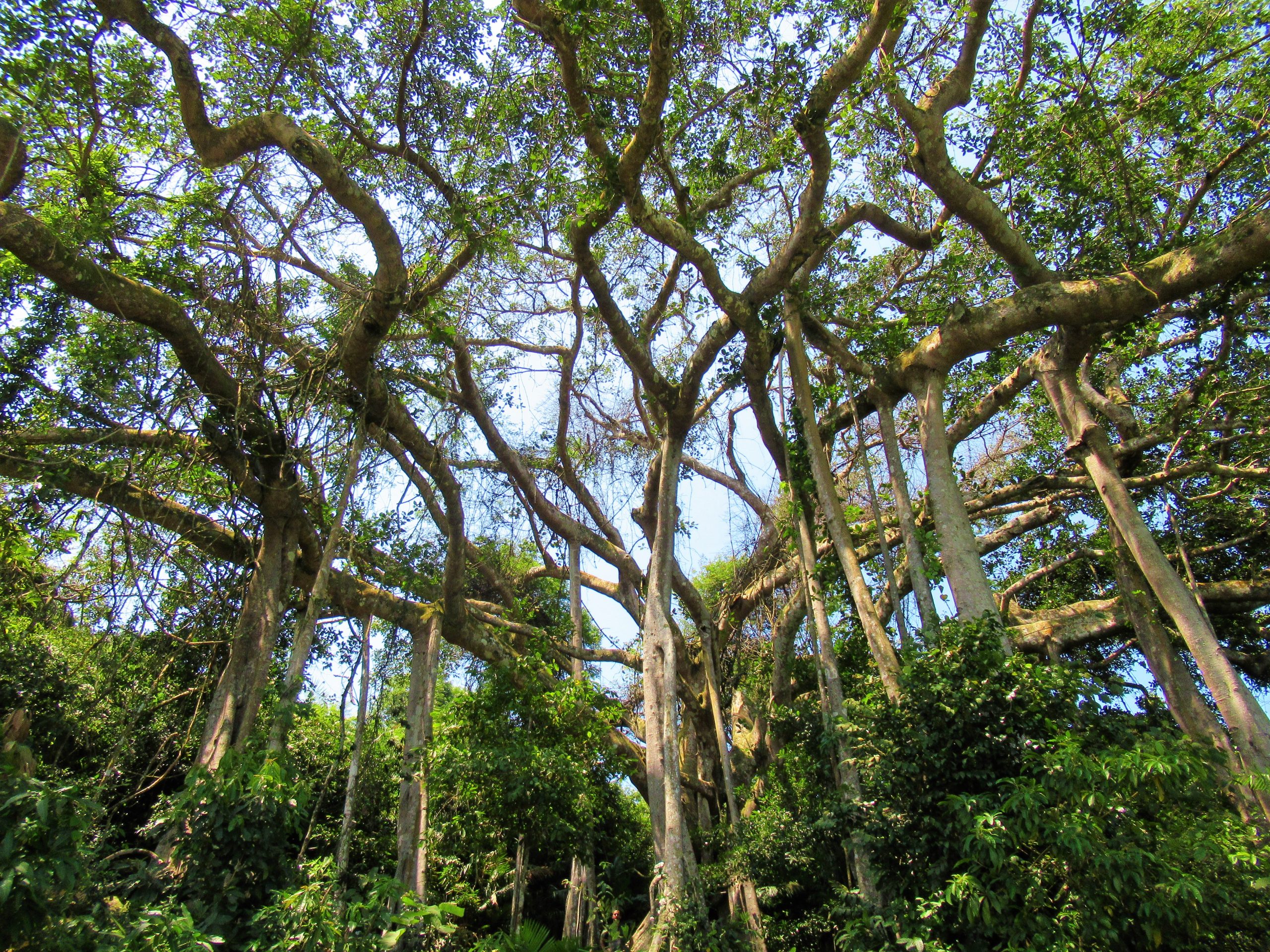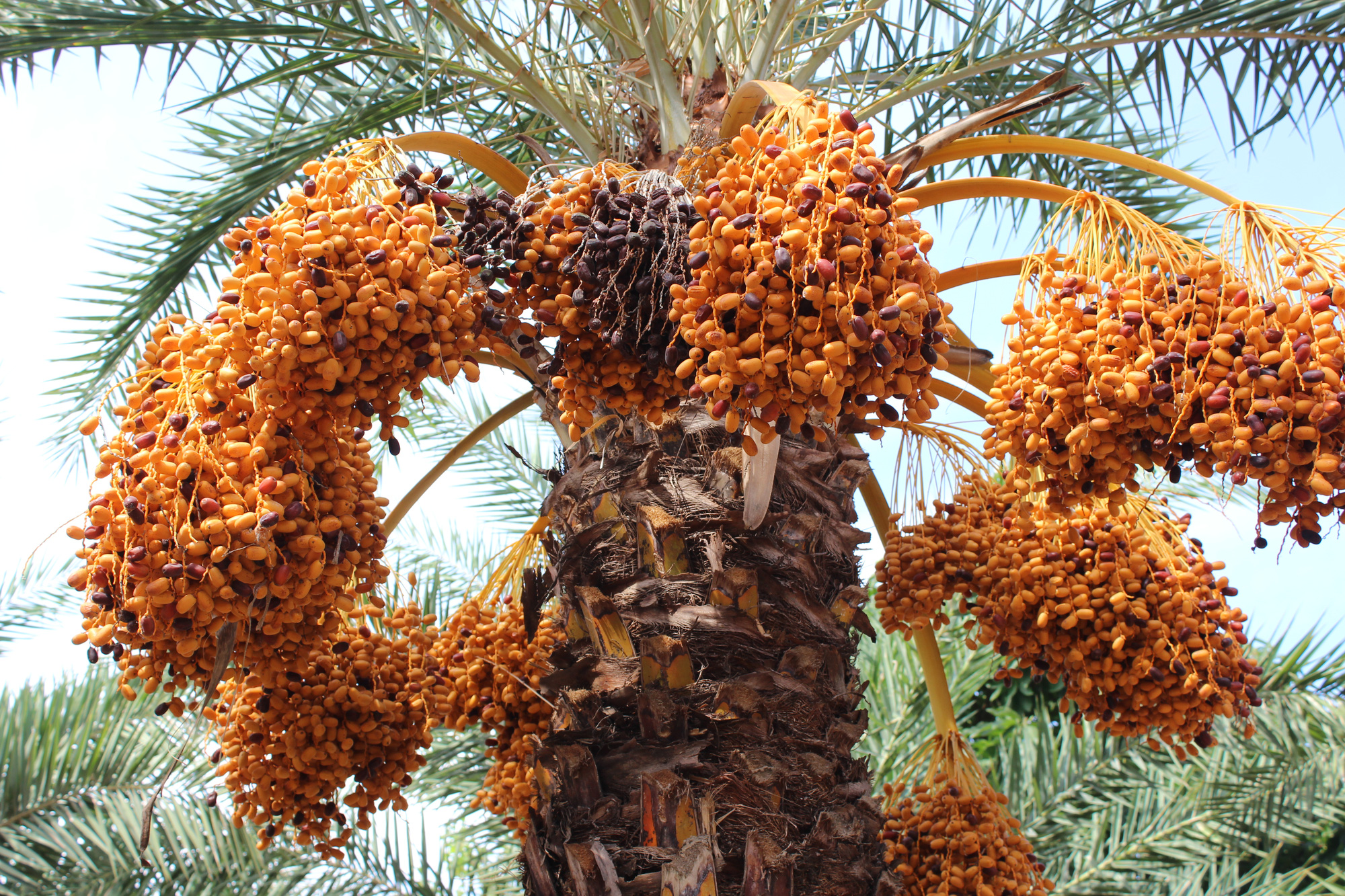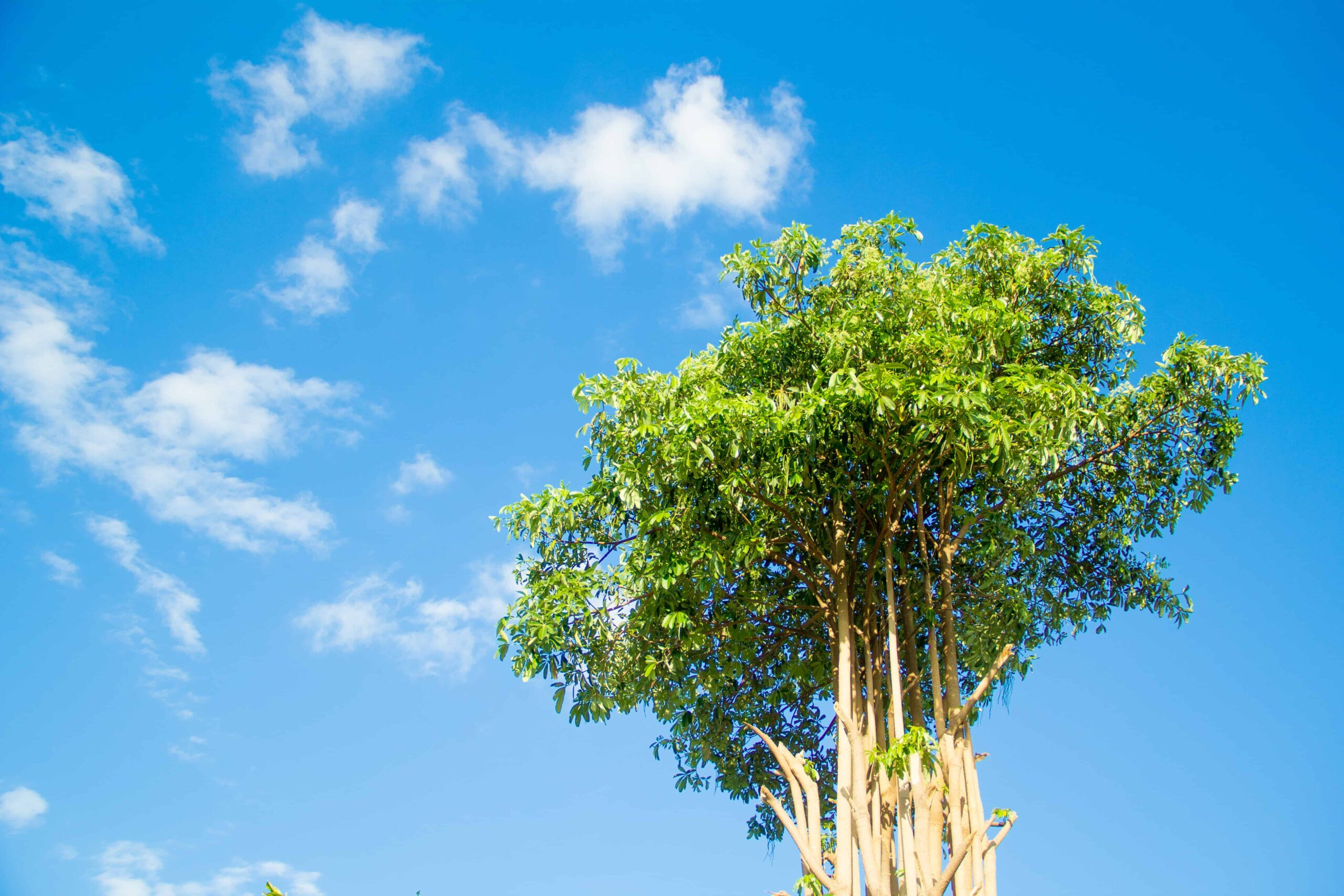Are you fascinated by the diverse and awe-inspiring trees in Vietnam? Let’s delve into the world of Vietnam trees and explore some of the incredible species that make this country truly unique.
From majestic giants to delicate marvels, trees in Vietnam showcase the country’s botanical heritage in all its splendor. This article will help you delve into the fascinating realm of Vietnam’s diverse flora and explore the awe-inspiring trees that adorn its landscapes. And if you are curious to know what is the most common tree in Vietnam, read on to get your answer!

1. 16 of the most common trees in Vietnam
1.1. Bamboo tree (Cay tre) – The symbol of Vietnam

The bamboo tree (cay tre) holds an important place among lots of trees in the Vietnamese countryside. It is not only a prominent member of the Vietnam trees family but also a significant symbol of the country’s culture. With its tall and slender stature, the bamboo tree represents resilience and flexibility, qualities that are deeply valued by the Vietnamese people.
During the Tet holiday celebration, the bamboo tree takes on a special role as the “cay neu”, or Vietnamese New Year tree. Adorned with vibrant decorations and red ribbons, it symbolizes good luck and prosperity for the year ahead.
1.2. Maple tree (Cay phong)
Maple trees (cay phong) are not native to Vietnam, but they have found a special place among the diverse array of trees in Vietnam. While not considered a traditional tree of Vietnam, the maple tree has gained popularity and recognition as a distinctive and captivating species. With its unique leaf shapes and vibrant autumn colors, the maple tree Vietnam adds a touch of enchantment to landscapes across the country, especially in provinces like Bac Giang, Yen Bai, and Thua Thien-Hue.
1.3. Palm tree (Cay co)

The palm tree (cay co) is an alluring feature among the many mesmerizing trees in Vietnam. These Vietnam trees, with their slender trunks and graceful fronds, exude a tropical charm that is quintessentially Vietnamese.
Palm tree Vietnam can be found across the country, adorning landscapes and adding a touch of serenity to their surroundings. From sandy beaches to bustling city streets, these majestic palms create a tranquil visual spectacle, enchanting both locals and tourists with their elegant presence.
1.4. Money tree (Cay kim tien)
The money tree (cay kim tien) is a remarkable tree of Vietnam, representing one of the iconic trees in Vietnam. The plant has many legends and beliefs concerning money, hence the name “money tree”. As a symbol of wealth and fortune, this tree of Vietnam is believed to bring good luck, prosperity, and abundance to those who keep it. Its unique appearance and association with financial prosperity make the Vietnamese money tree a much-beloved tree in the country.
1.5. Banyan tree (Cay da) – A symbol of Vietnamese villages

Standing tall and proud, the banyan tree Vietnam (cay da) is not merely a testament to the immense diversity of trees in Vietnam, but also an emblematic icon that embodies the spirit of Vietnamese villages. Its sprawling branches, adorned with lush foliage, create a majestic canopy that offers shade and shelter to both humans and wildlife alike. As you witness the grandeur of the Vietnam banyan tree, you cannot help but feel a profound sense of awe and reverence for the harmony between nature and humanity that it represents.
1.6. Copperpod Tree (Cay lim xet)
The fast-growing copperpod tree (cay lim xet) thrives in the sun and well-drained soil, making it an important addition to the world of trees in Vietnam. Its leaves gracefully fall in the high 20s temperature range but quickly regenerate with resilience.
Within just a few years, these young Vietnam trees burst into charming golden blooms, captivating all who behold them. The copperpod tree’s adaptability allows it to thrive in various environments, remaining a mesmerizing presence among the rich tapestry of Vietnam’s diverse tree population.
1.7. Flame tree (Cay phuong)

Flame trees embody the glorious beauty of trees in Vietnam. As an iconic Vietnam tree, particularly found in the city of Hai Phong, the tree mesmerizes with its vivid blooms in shades of red and orange. Towering gracefully and spreading its branches wide, it creates a serene, shaded haven beneath its magnificent canopy. The flame trees’ long and fluffy leaves further enhance their grace and charm, making them such a beloved sight in Hai Phong.
1.8. Teak tree (Cay tech)
The teak trees thrive in the monsoon rainforests of southern Asia, including Vietnam. With a lifespan of up to a century and towering heights of 150 feet, these trees in Vietnam command attention. Initially, their foliage emerges in shades of red, eventually transitioning to a lush green as the leaves mature. Known for their unparalleled strength and exquisite beauty, teak trees are the source of prized teak wood, making them a prominent tree in Vietnam.
1.9. Kapok tree (Cay bong gao)
.jpeg)
Reaching staggering heights of up to 200 feet and growing as much as 13 feet annually, these towering Vietnam trees stand out from the lush tropical flora. As a deciduous tree, the kapok sheds all its leaves during the dry season, ensuring effective seed dispersal. Kapok trees in Vietnam produce an abundance of fruits, each containing around 200 seeds, which are dispersed throughout the woodland by the silky fibers released when the fruit bursts open.
1.10. Giant Crape-myrtle tree (Cay hoa bang lang)
The giant Crape-myrtle trees in Vietnam, which are a common sight in Hanoi, trace their origins back to India. Their beautiful shades of light purple exude an elegance reminiscent of a young girl’s charm, making them a popular ornamental tree of Vietnam.
During the summer months, clusters of purple flowers grace its branches, forming long clusters that stretch 20 to 40 centimeters in length. The exotic beauty of the purple bang lang flowers contributes to the refined and graceful ambiance of the capital city, leaving residents of Hanoi captivated by their pure allure.
1.11. Milk flower tree (Cay hoa sua)

Among the countless trees in Vietnam, the milk flower tree is regarded as one of the distinctive features of Hanoi’s autumn. With its pure white blossoms that exude the gentle beauty of nature, it has gained popularity and is widely grown.
One notable characteristic of these Vietnam trees is their strong fragrance, especially when planted densely. For the people of Hanoi, the rich scent of milk flowers has become ingrained in their subconscious, becoming a part of their daily lives. It evokes memories of home and the ancient, solemn land of Hanoi with its thousand-year-old cultural heritage.
1.12. Jackfruit tree (Cay mit) – An exotic Vietnam tree
The jackfruit trees in Vietnam can reach impressive heights of up to 66 feet. Its ripe fruits are known for their enormous size, with the heaviest jackfruit on record weighing nearly 100 pounds. A single Vietnam jackfruit tree can yield around 200 fruits per year, each weighing an average of 33 pounds. Jackfruit’s pulp can be enjoyed raw or cooked, making it a popular meat substitute in some cuisines.
1.13. Coconut tree (Cay dua)

The coconut trees in Vietnam are a true treasure, providing a multitude of valuable resources for diverse purposes. The Vietnam coconut tree is mainly cultivated in the South, particularly in the Mekong Delta region, where it has become a vital crop for the people of Ben Tre province due to its significant economic value.
Among the popular varieties are the group of dwarf coconut trees, known for their refreshing coconut water, consisting of green Siamese coconut, blue Siamese coconut, and red Siamese coconut, to name but a few.
Additionally, the coconut tree of Vietnam is utilized for its husk, copra, and oil. The Macapuno Coconut features exceptionally thick and nutritious copra, while the Vietnamese green and yellow coconut is sought after to produce coconut oil and various coir products.
1.14. Guava tree (Cay oi)
Guava trees in Vietnam are highly valued for their delicious and nutritious fruits. The Vietnam Guava tree is planted extensively throughout the country, with various popular Guava varieties such as oi Bo, oi xa li nghe, oi se, oi mo, oi dao, and oi nghe being grown. Among them, the “xa li nghe” guava variety stands out as the most common and favored choice due to its remarkable characteristics, including large-sized fruits, minimal seeds, thick and crispy flesh, and a delightful sweet. These Vietnam trees can yield impressive harvests, with productivity ranging up to 70-80 tons per hectare per year for mature ones.
1.15. Grapefruit tree (Cay buoi)

The grapefruit tree is considered one of the most common trees in Vietnam since it is widely cultivated in all regions of the country. While they are not the national fruit of Vietnam, these trees in Vietnam are still a beloved kind of fruit tree among farmers and locals alike thanks to their juicy and tangy fruits. From the famous “buoi nam roi” of the Mekong Delta to the aromatic “buoi da xanh”, Vietnam offers a wide variety of grapefruit trees that bear delicious and flavorsome fruits.
1.16. Banana tree (Cay chuoi)
The banana tree, also known as cay chuoi, is one of the most common trees in Vietnam. Along with the mango tree Vietnam, the banana is prominently featured on the five-fruit tray during the Tet holiday, symbolizing abundance and prosperity. This tree of Vietnam bears clusters of delicious and nutritious bananas, making it a beloved fruit enjoyed by many. With its lush green leaves and sturdy trunk, the banana tree adds beauty to the tropical scenery of Vietnam and remains an essential part of its agricultural heritage.
